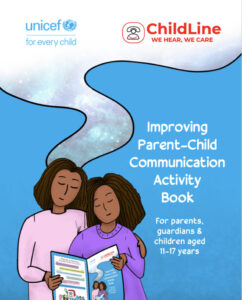[et_pb_section fb_built=”1″ _builder_version=”4.5.7″ da_is_popup=”off” da_exit_intent=”off” da_has_close=”on” da_alt_close=”off” da_dark_close=”off” da_not_modal=”on” da_is_singular=”off” da_with_loader=”off” da_has_shadow=”on” da_disable_devices=”off|off|off”][et_pb_row _builder_version=”4.5.7″ _module_preset=”default”][et_pb_column type=”4_4″ _builder_version=”4.5.7″ _module_preset=”default”][et_pb_post_title _builder_version=”4.5.7″ _module_preset=”default” hover_enabled=”0″ title_level=”h2″][/et_pb_post_title][/et_pb_column][/et_pb_row][et_pb_row _builder_version=”4.5.7″ custom_margin=”-36px|auto||auto||”][et_pb_column type=”4_4″ _builder_version=”4.4.6″][et_pb_text _builder_version=”4.5.7″]
What does it mean when a child self-harms?
Self-harm or self-injury refers to the act of deliberately injuring or physically damaging oneself. This often takes the form of some kind of damage to the skin or body tissue. Some of the most common forms of self-harm include cutting, scratching, burning, hitting, or bruising oneself. However, there are many other, sometimes more dangerous, ways that persons may do this.
Why would someone want to hurt themselves like that?
There are quite a number of reasons a person may resort to self-harm. For many people, it can be a short-term way of dealing with difficult or overwhelming emotions. A child or teen that may be struggling with intense feelings of rage may self-harm to distract from the emotional turmoil. A person dealing with internal and external conflict over their sexuality may use self-harm as an outlet for feelings of frustration and self-hatred. Generally, self-harm seems to be a coping mechanism for persons facing emotional or psychological difficulty, though each person has their own motivations.
Signs that your child may be self-harming
- Unexplained or poorly explained cuts, bruises, and scars
- Wounds or scars consistently appearing on the same area of the body
- Wounds that don’t seem to heal for a long time or get worse with no medical reason
- The child constantly wears long sleeves or long pants even in warm weather (assuming this is not the norm)
- Excessive time spent alone (more than usual)
- Excessively low mood, loss of interest in activities that they previously enjoyed
- Avoidance of activities, like going to the beach or pool, that might normally require changing clothes around others or wearing a bathing suit
- Possession of sharp objects like broken glass, razors, nails, safety pins, or splinters
Note that these signs may be representative of your child’s normal behaviour (e.g. time spent alone). It’s important to know your child’s typical behaviour so you can notice if there are any sudden or unusual changes.
Should you force them to stop?
If you discover that your child is practising self-harm, you may instinctively want to take away the object that they use to hurt themselves. However, this is most likely going to push the child to find alternative ways to do so. These new methods may end up being even more harmful than what you originally tried to stop.
What should I do then?
- First, take a moment to calm yourself and process the new information. Whether someone told you or you figured it out on your own, either way, it can be a scary thing to find out.
- Avoid being judgemental. While you may not understand their motivations, it doesn’t mean something is wrong with them or that they’re “crazy”. Shaming them may drive them even further into risky behaviour. Take the opportunity to do research and learn about self-harm and how to deal with it. (Simply reading this article indicates that, you’re taking a step in the right direction).
- Let them know that you still love them no matter what. Show them that even if you’re shocked and scared, you’re willing to support them and get them the help they may need to get better.
- Be open and encourage them to talk to you about what they’re going through. Don’t confront them or ambush them with a bunch of questions. It can be as simple as gently asking them about their scars/wounds. Make it clear that you’re not upset and that you just want to understand how they feel. Ask them what you can do to help them or make them feel better. It’s important that this conversation happens in a safe space where they can step away from the conversation without negative consequences, should they need to.
Self-harm is not very likely to stop after just one conversation, but open, non-judgmental communication with your child is a huge step in the right direction. Be patient and show them that you care. If at any point you feel out of your depth or you don’t seem to be making progress, please contact a professional.
Remember that ChildLine offers free, private, and professional counselling for persons 25 and under. Visit childlinett.org/booking to request an appointment if you feel like your child may need some additional support.
[/et_pb_text][/et_pb_column][/et_pb_row][/et_pb_section]







